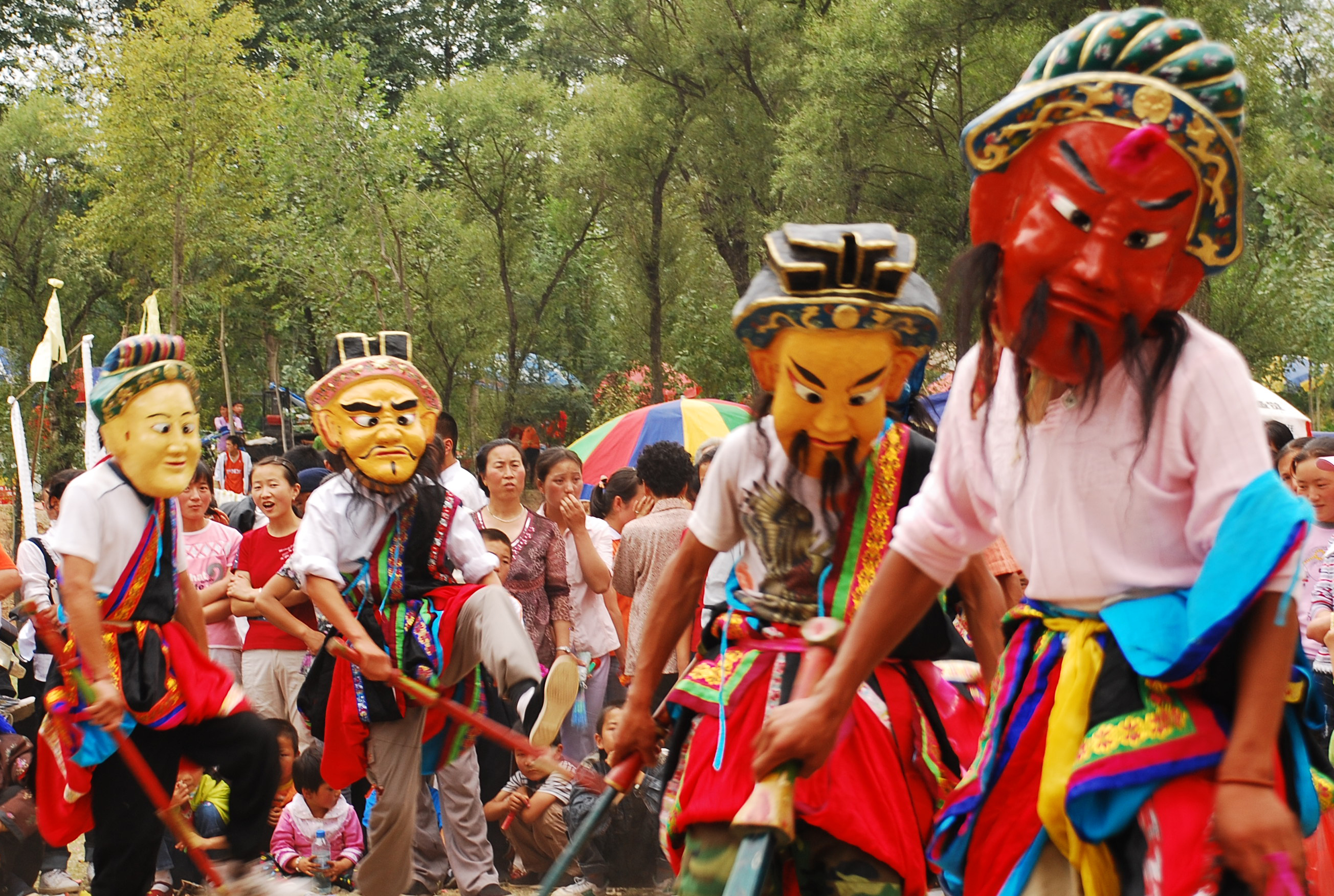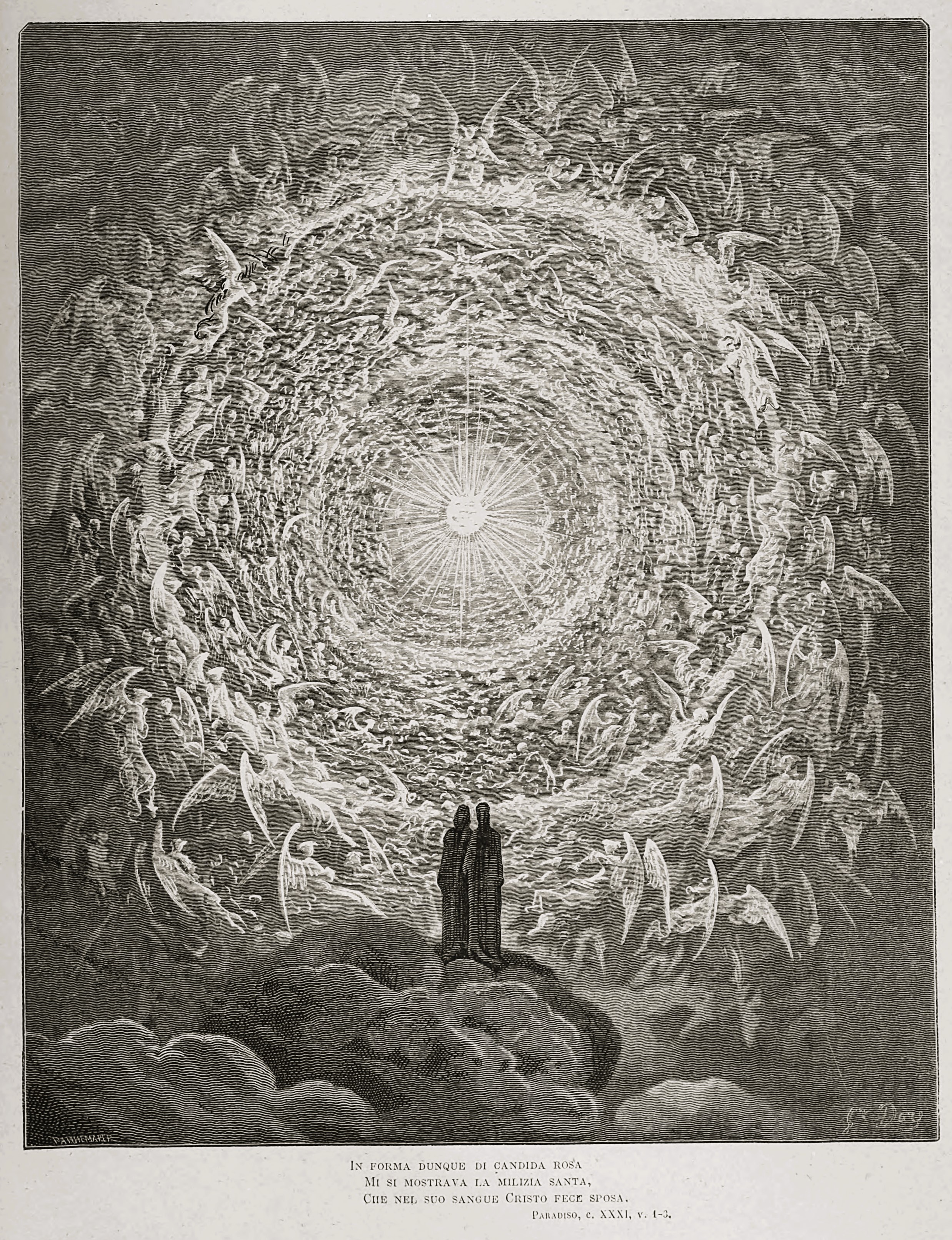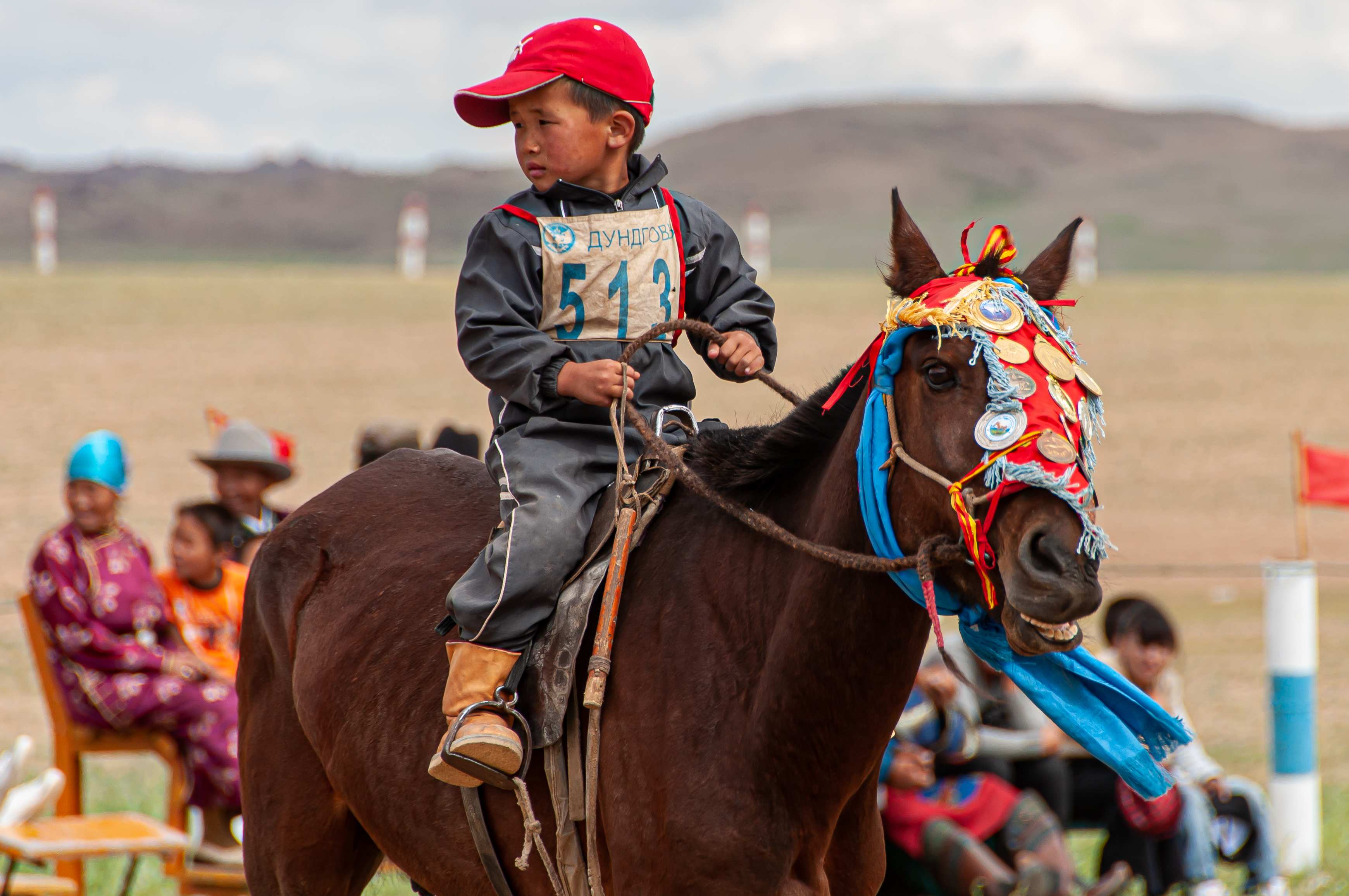|
Nadun
Nadun is a traditional festival held by the Monguor people (known as the ''Tu Zu'' in Chinese). The festival's name resembles the Nadam festival of the Mongols, but different in format and content. Origins The Monguor “Nadun” and the Mongolian “ Nadam” are special nouns designated to an annual festival and reflect their shared origins from the northern nomadic people, such as the Xianbei, who were recorded to have “one major gathering every spring for leisure and fun”. Whereas the Mongolian Nadam preserved the nomadic features of horse race, wrestling, and archery, the Monguor Nadun has encoded their history through masked dance performances and presents as an annual military drill combined with joyful celebrations of harvest. It is specifically held in the Sanchuan/ Guanting area in Minhe County, located on the north bank of the Yellow River, at the easternmost point of Qinghai, as the River flows eastward into Gansu, which holds the most densely populated Monguo ... [...More Info...] [...Related Items...] OR: [Wikipedia] [Google] [Baidu] |
Monguor People
The Monguor people ( Monguor: Mongghul), also known as Tu people (), White Mongol or Tsagaan Mongol, are a Mongolic people and one of the 56 officially recognized ethnic groups in China. According to the 2000 census, the total population was 241,198, who mostly lived in the Qinghai and the Gansu provinces. The 2010 census gave their number as 289,565. The Monguor people speak the Monguor language, which belongs to the family of Mongolic languages but has been heavily influenced by both the local Chinese and Tibetan dialects. Today, nearly all Tu people also speak Chinese. Most are farmers and some keep livestock. Their culture and the social organizations have been influenced by Tibetan Buddhism, Confucianism, Taoism and local beliefs. A few Tu in Huzhu and Minhe are Christian, the result of on-going American and Korean missionary work in the area. Ethnic origins The ethnic history of the Monguor is contested. It has been variously suggested that their origins are relate ... [...More Info...] [...Related Items...] OR: [Wikipedia] [Google] [Baidu] |
Sanchuan
Guanting () is a town in eastern Qinghai province, China. It is located in the southeast of Minhe County and, together with Guanting, Zhongchuan, Xiakou, Gangou and Xin'er townships, is referred to as the Guanting Area (). It is the home to the most densely populated Monguor settlement in China, who refer to the area as "Sanchuan" (). Toponymy The official Chinese name for the area is Guanting (). Local legends accounted that the name came from the famous general, Guan Yu, who stopped by in the area on his way to look for his sworn brother, Liu Bei, the founder of the Shu Han Kingdom (221-263) in the southwest, after having left Cao Cao of the Cao Wei Kingdom (220-265) in China proper. The Chinese name "Guan" in Guanting came from the last name of Guan Yu, whereas "Ting" came from the Chinese character for "stop" () or "pavilion" (). The informal reference by the local residents of the Monguor is " Sanchuan" (), which literally means "Three Plains" and applies to the Upper, M ... [...More Info...] [...Related Items...] OR: [Wikipedia] [Google] [Baidu] |
Guanting, Minhe County
Guanting () is a town in eastern Qinghai province, China. It is located in the southeast of Minhe County and, together with Guanting, Zhongchuan, Xiakou, Gangou and Xin'er townships, is referred to as the Guanting Area (). It is the home to the most densely populated Monguor settlement in China, who refer to the area as "Sanchuan" (). Toponymy The official Chinese name for the area is Guanting (). Local legends accounted that the name came from the famous general, Guan Yu, who stopped by in the area on his way to look for his sworn brother, Liu Bei, the founder of the Shu Han Kingdom (221-263) in the southwest, after having left Cao Cao of the Cao Wei Kingdom (220-265) in China proper. The Chinese name "Guan" in Guanting came from the last name of Guan Yu, whereas "Ting" came from the Chinese character for "stop" () or "pavilion" (). The informal reference by the local residents of the Monguor is "Sanchuan" (), which literally means "Three Plains" and applies to the Upper, Mid ... [...More Info...] [...Related Items...] OR: [Wikipedia] [Google] [Baidu] |
Qinghai
Qinghai is an inland Provinces of China, province in Northwestern China. It is the largest provinces of China, province of China (excluding autonomous regions) by area and has the third smallest population. Its capital and largest city is Xining. Qinghai borders Gansu on the northeast, Xinjiang on the northwest, Sichuan on the southeast and the Tibet Autonomous Region on the southwest. Qinghai province was established in 1928 during the period of the Republic of China (1912–1949), Republic of China, and until 1949 was ruled by Hui people, Chinese Muslim warlords known as the Ma clique. The Chinese language, Chinese name "Qinghai" is after Qinghai Lake, the largest lake in China. The lake is known as Tso ngon in Tibetan, and as Kokonor Lake in English, derived from the Mongol Oirat language, Oirat name for Qinghai Lake. Both Tso ngon and Kokonor are names found in historic documents to describe the region.Gangchen Khishong, 2001. ''Tibet and Manchu: An Assessment of Tibet-Man ... [...More Info...] [...Related Items...] OR: [Wikipedia] [Google] [Baidu] |
Lunar Calendar
A lunar calendar is a calendar based on the monthly cycles of the Moon's phases ( synodic months, lunations), in contrast to solar calendars, whose annual cycles are based on the solar year, and lunisolar calendars, whose lunar months are brought into alignment with the solar year through some process of intercalationsuch as by insertion of a leap month. The most widely observed lunar calendar is the Islamic calendar. The details of when months begin vary from calendar to calendar, with some using new, full, or crescent moons and others employing detailed calculations. Since each lunation is approximately days, (which gives a mean synodic month as 29.53059 days or 29 days 12 hours 44 minutes and 3 seconds) it is common for the months of a lunar calendar to alternate between 29 and 30 days. Since the period of 12 such lunations, a lunar year, is 354 days, 8 hours, 48 minutes, 34 seconds (354.36707 days), lunar calendars are 11 to 12 day ... [...More Info...] [...Related Items...] OR: [Wikipedia] [Google] [Baidu] |
Heaven
Heaven, or the Heavens, is a common Religious cosmology, religious cosmological or supernatural place where beings such as deity, deities, angels, souls, saints, or Veneration of the dead, venerated ancestors are said to originate, be throne, enthroned, or reside. According to the beliefs of some religions, heavenly beings can descend to Earth or Incarnation, incarnate and earthly beings can ascend to Heaven in the afterlife or, in exceptional cases, enter Heaven Entering heaven alive, without dying. Heaven is often described as a "highest place", the Sacred, holiest place, a paradise, in contrast to Hell or the Underworld or the "low places" and History of Christian universalism, universally or conditionally accessible by earthly beings according to various standards of divinity, good and evil, goodness, piety, faith, or other virtues or orthodoxy, right beliefs or simply Will of God, divine will. Some believe in the possibility of a heaven on Earth in a ''world to come''. A ... [...More Info...] [...Related Items...] OR: [Wikipedia] [Google] [Baidu] |
Western Culture
Western culture, also known as Western civilization, European civilization, Occidental culture, Western society, or simply the West, refers to the Cultural heritage, internally diverse culture of the Western world. The term "Western" encompasses the social norms, ethical values, Tradition, traditional customs, belief systems, political systems, Cultural artifact, artifacts and technology, technologies primarily rooted in History of Europe, European and History of the Mediterranean region, Mediterranean histories. A broad concept, "Western culture" does not relate to a region with fixed members or geographical confines. It generally refers to the classical era cultures of Ancient Greece and Ancient Rome that expanded across the Mediterranean basin and Europe, and later circulated around the world predominantly through colonization and globalization. Historically, scholars have closely associated the idea of Western culture with the classical era of Greco-Roman antiquity. Howeve ... [...More Info...] [...Related Items...] OR: [Wikipedia] [Google] [Baidu] |
Thanksgiving
Thanksgiving is a national holiday celebrated on various dates in October and November in the United States, Canada, Saint Lucia, Liberia, and unofficially in countries like Brazil and Germany. It is also observed in the Australian territory of Norfolk Island. It began as a day of giving thanks for the blessings of the harvest and of the preceding year. Various similarly named harvest festival holidays occur throughout the world during autumn. Although Thanksgiving has historical roots in religious and cultural traditions, it has long been celebrated as a Secularity, secular holiday as well. History Prayers of thanks and special thanksgiving ceremonies are common among most religions after harvests and at other times of the year. The Thanksgiving holiday's history in North America is rooted in English traditions dating from the Protestant Reformation. It also has aspects of a harvest festival, even though the harvest in New England occurs well before the late-November date on ... [...More Info...] [...Related Items...] OR: [Wikipedia] [Google] [Baidu] |
Gansu
Gansu is a provinces of China, province in Northwestern China. Its capital and largest city is Lanzhou, in the southeastern part of the province. The seventh-largest administrative district by area at , Gansu lies between the Tibetan Plateau, Tibetan and Loess Plateau, Loess plateaus and borders Mongolia's Govi-Altai Province, Inner Mongolia and Ningxia to the north, Xinjiang and Qinghai to the west, Sichuan to the south and Shaanxi to the east. The Yellow River passes through the southern part of the province. Part of Gansu's territory is located in the Gobi Desert. The Qilian Mountains, Qilian mountains are located in the south of the Province. Gansu has a population of 26 million, ranking List of Chinese administrative divisions by population, 22nd in China. Its population is mostly Han Chinese, Han, along with Hui people, Hui, Dongxiangs, Dongxiang and Tibetan people, Tibetan minorities. The most common language is Mandarin. Gansu is among the poorest administrative divi ... [...More Info...] [...Related Items...] OR: [Wikipedia] [Google] [Baidu] |
Minhe Hui And Tu Autonomous County
Minhe Hui and Tu Autonomous County ( zh, s=民和回族土族自治县; Xiao'erjing: ; Monguor: ), known in Tibetan as Kamalog, is the easternmost county in Qinghai Province, China. It is under the administration of Haidong (lit. Eastern Qinghai) Region. "Hui" refers to the Chinese Muslims, whereas "Tu" refers to the ethnic group known as “ Monguor” in the West and as " Tu Zu" in China. It borders the Honggu District of Gansu on the east, demarcated by the Datong River, a tributary to the Huangshui River, which eventually flows into the Yellow River. The county is multi-ethnic and significant to not only holding the most densely populated Tu Zu settlement in Sanchuan/ Guanting in its southeastern portion, but also as the homeland of the legendary Emperor Yü the Great, who established the Xia dynasty (2070–1600 BC), the first ever recorded dynasty in the ancient Chinese history based on recent archaeological discoveries. Administrative divisions Minhe is divided int ... [...More Info...] [...Related Items...] OR: [Wikipedia] [Google] [Baidu] |
Yellow River
The Yellow River, also known as Huanghe, is the second-longest river in China and the List of rivers by length, sixth-longest river system on Earth, with an estimated length of and a Drainage basin, watershed of . Beginning in the Bayan Har Mountains, the river flows generally eastwards before entering the long Ordos Loop, which runs northeast at Gansu through the Ordos Plateau and turns east in Inner Mongolia. The river then turns sharply southwards to form the border between Shanxi and Shaanxi, turns eastwards at its confluence with the Wei River, and flows across the North China Plain before emptying into the Bohai Sea. The river is named for the yellow color of its water, which comes from the large amount of sediment discharged into the water as the river flows through the Loess Plateau. The Yellow River basin was the birthplace of Yellow River civilization, ancient Chinese civilization. According to traditional Chinese historiography, the Xia dynasty originated on it ... [...More Info...] [...Related Items...] OR: [Wikipedia] [Google] [Baidu] |
Nadam
Naadam (Mongolian Naadam Festival) (, classical Mongolian: ''Naɣadum'', , ''literally "games"'') is a traditional festival celebrated in Mongolia, Inner Mongolia and Tuva. The festival is also locally termed "eriin gurvan naadam" (), "the three games of men". The games are Mongolian wrestling, horse racing, and archery, and are held throughout the country during midsummer. Women have started participating in the archery and girls in the horse-racing games, but not in Mongolian wrestling. In 2010, Naadam was inscribed on the Representative List of the Intangible Cultural Heritage of Humanity of UNESCO. Overview Origins Naadam is the most widely watched festival among Mongols and is believed to have existed for centuries in one fashion or another. It has its origin in the activities, such as military parades and sporting competitions such as archery, horse riding and wrestling, that followed the celebration of various occasions, including weddings or spiritual gatherings. It ... [...More Info...] [...Related Items...] OR: [Wikipedia] [Google] [Baidu] |








